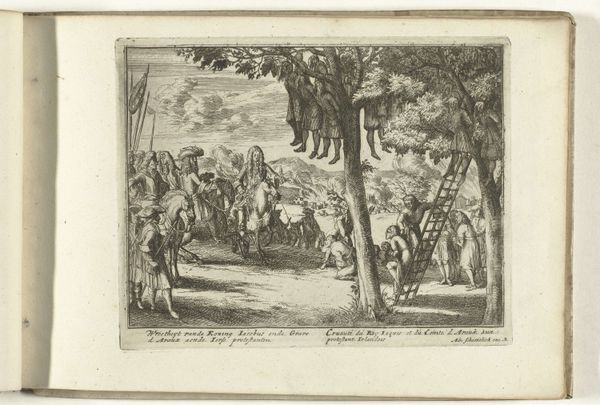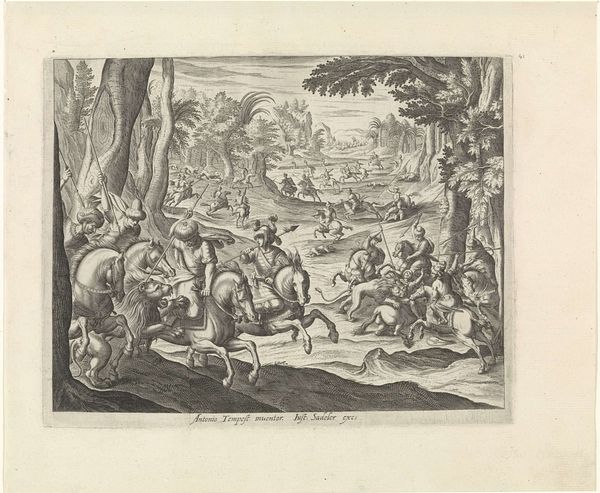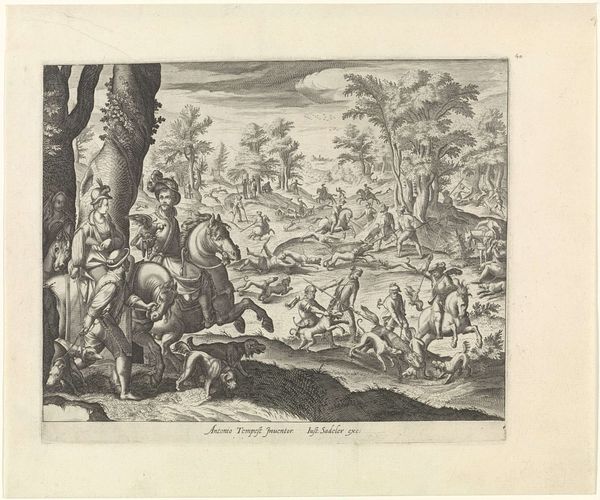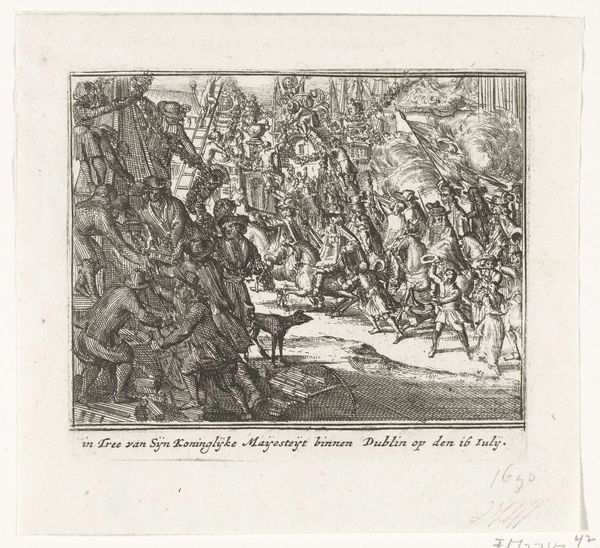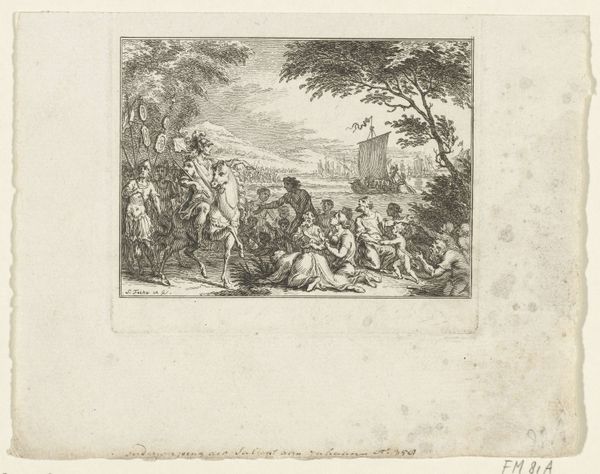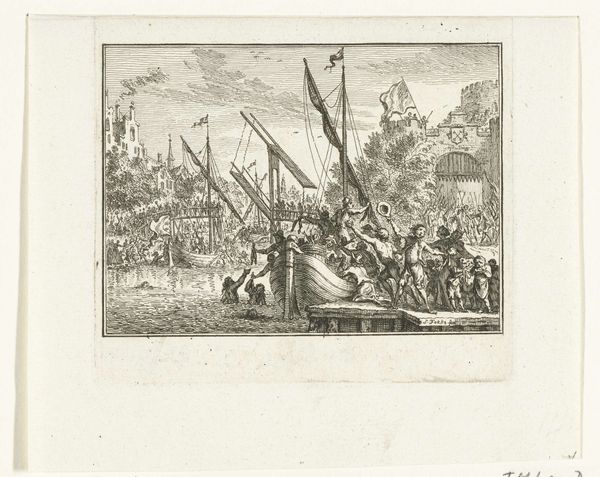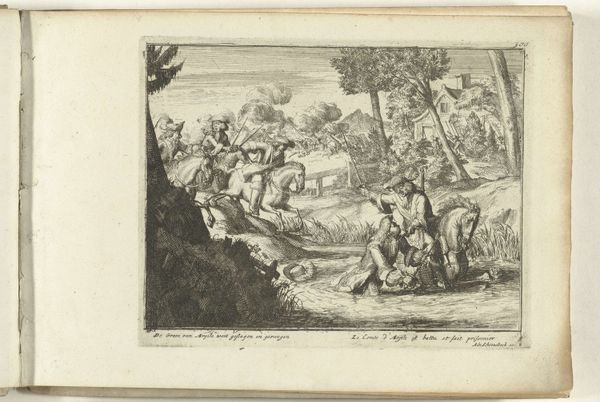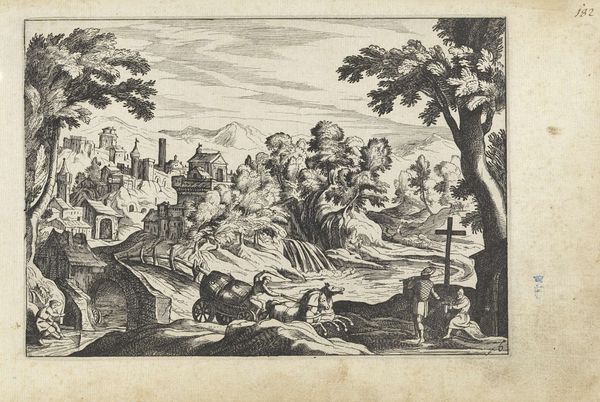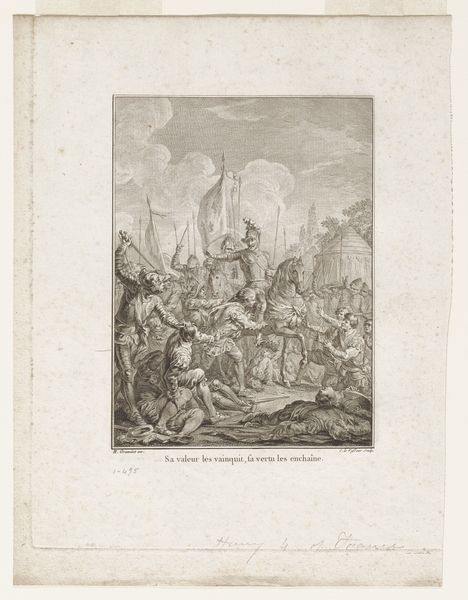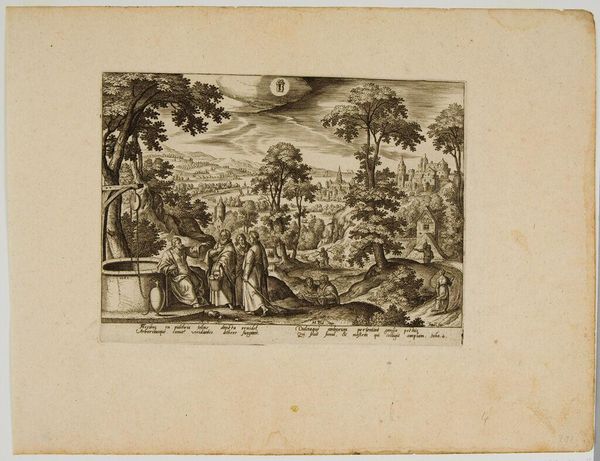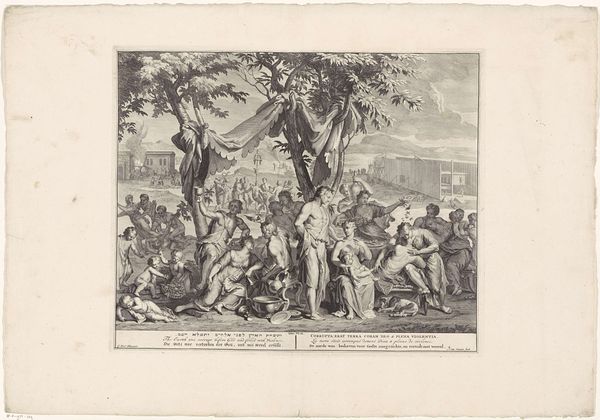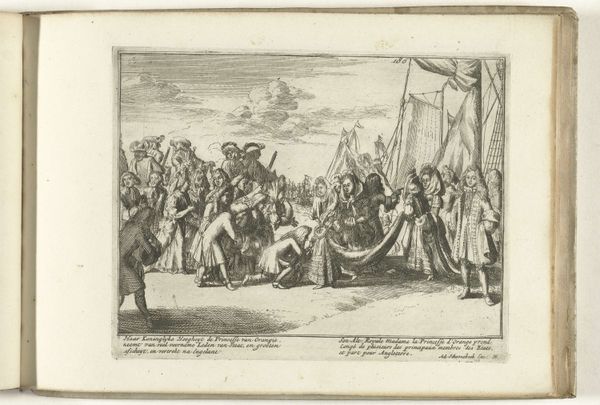
Dimensions: height 93 mm, width 108 mm
Copyright: Rijks Museum: Open Domain
Editor: This is "Verminking van de lichamen van de gebroeders De Witt, 1672" by Simon Fokke, created sometime between 1782 and 1784. It's an engraving. It feels incredibly chaotic and violent. I'm curious, what do you see in this piece beyond the immediate shock? Curator: Beyond the depiction of brutality, I see a potent and chilling visual symbol of the fragility of power and the transience of political ideals. This image resonates because it captures a moment of intense cultural upheaval. Editor: How so? Curator: Consider the date, 1782-84. This print wasn't made during the actual event in 1672, but over a century later. This suggests a continuous cultural memory of the event. What do you think it says that it's an engraving rather than another medium? Editor: Maybe that it allowed for wider distribution, ensuring that the event continued to be remembered, even warned against? What strikes me is how some figures actively participate in the violence, while others seem to stand by as spectators. What do you make of that contrast? Curator: That division speaks volumes. The active participants represent the unbridled fury of the mob, while the spectators embody a silent complicity, a societal breakdown. Their expressions and gestures are almost codified; each reaction becomes a symbol. This artwork thus isn't simply documenting an event but offering a moral and political commentary. What emotional impact does this continued retelling have for you? Editor: It is fascinating to think about how symbols evolve in meaning. Curator: Indeed.
Comments
No comments
Be the first to comment and join the conversation on the ultimate creative platform.
